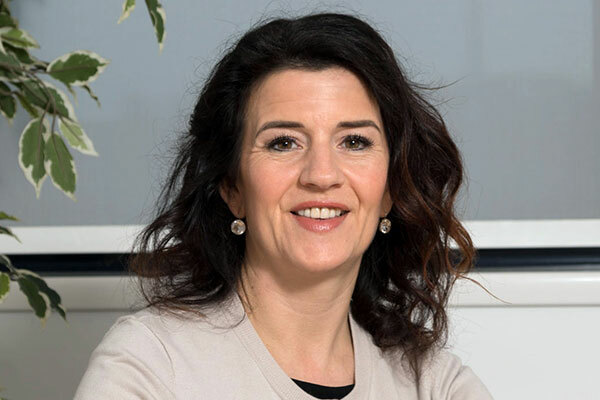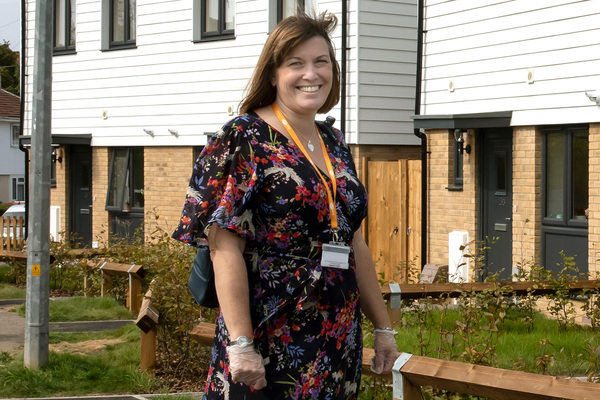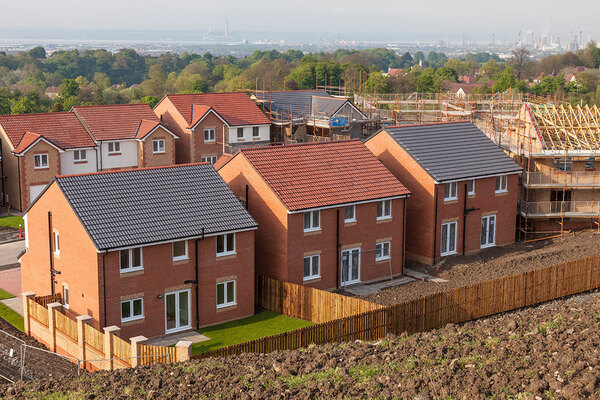15 minutes with… Tracy Harrison, chief executive of the Northern Housing Consortium
The Northern Housing Consortium has some 150 members in the North of England, including housing associations, councils and ALMOs. Dominic Brady speaks to its chief executive Tracy Harrison about what has been a tumultuous year for the sector
What are some of the biggest challenges facing housing in the North at the moment?
The major challenge that’s facing all of us is how we recover after COVID-19 and, of course, levelling up was already high on the agenda prior to COVID-19, and we were concerned that the focus on that might slip during the pandemic. But it has been really reassuring to hear government recommit itself to it.
Other challenges in the North are that we don’t have enough of the right homes in the right places, so we need to increase supply. But we also have a major challenge in terms of the quality of our existing housing stock.
Prior to COVID-19, we were focusing attention on how these non-decent homes contributed to carbon emissions and the opportunity to decarbonise existing housing stock. Up to 30% of emissions in some places in the North come from existing housing stock, so you’re never going to achieve net zero until you deal with that. I think that becomes more relevant in light of COVID-19 because of the opportunity to create jobs and stimulate the economy through a retrofit programme. We think that we could create around 20,000 jobs in the North through a retrofit decarbonisation programme.
Were you surprised by the close relationship between housing inequality and health inequality that has been exposed by coronavirus?
No. Of the 1.3 million non-decent homes in the North, about 50% are occupied by somebody who is older or has a disability or long-term health condition.
We have also got huge inequality in terms of housing equity. You tend to imagine that if someone owns their own home and is retired, they will be equity rich, but in the North that is very often not the case – they will be equity poor and income poor.
The Affordable Homes Programme (AHP) states that social rent homes will be provided in areas of high affordability. What impact will that have on the North, which does not have the same affordability pressures as London and the South East?
We obviously welcomed the next round of the AHP – it’s tremendously important for the North because it’s one of the only funds that is not geographically targeted. We had some discussion with government that left us concerned that the AHP may become geographically targeted, so we worked really hard to demonstrate the importance of this fund to the North.
We’re pleased that it remained non-geographical but in terms of the issue of social rent, it is out of kilter with the message around levelling up, isn’t it? It just does not reflect reality.
This year the government announced major planning reforms set out in its Planning for the Future white paper. How do you think these reforms might impact the North?
You can make these wholesale reforms, but you have got to have the capacity within local authorities. As we have demonstrated through previous research, in the North we have seen a 65% loss in planning capacity since 2010. So I think that is a real concern – that’s where our focus would be. In terms of plans to do away with Section 106, the North already delivered far smaller numbers of homes through Section 106 than other parts of the country.
In the research we have done, council officers were saying to us: “One more extra responsibility will tip the balance and we won’t be able to cope” – and then of course coronavirus came along. So I think councils are under tremendous pressure and we have to recognise the role they play in housing development. And if we are serious about the number that government wants [300,000 new homes a year by the mid-2020s] then we have to make sure they are equipped to play their role in that.
How have you found working from home (Inside Housing would like to note that Ms Harrison’s home office looks like the inside of a Canadian log cabin)?
We started working from home the week before lockdown. Most staff already did one day working from home, so the transition was OK. For us it has worked incredibly well. In terms of the conferences, events and roundtables we have found we are able to reach far more people.
On top of this, most staff feel that it has had a positive impact on their health and well-being. We are now engaged in a programme with staff that looks at what the future of work will be like.
Beyond work, is there anything that you are particularly missing doing?
This is where I wish I could say something like “I play cello in an orchestra”, but no, from a personal point of view, I was probably doing 40,000 business miles a year and staying in hotels two or three times a week, so the quality of my life has increased.
I think being able to sit around the table with family members, including older parents – that’s the main thing that I miss.













